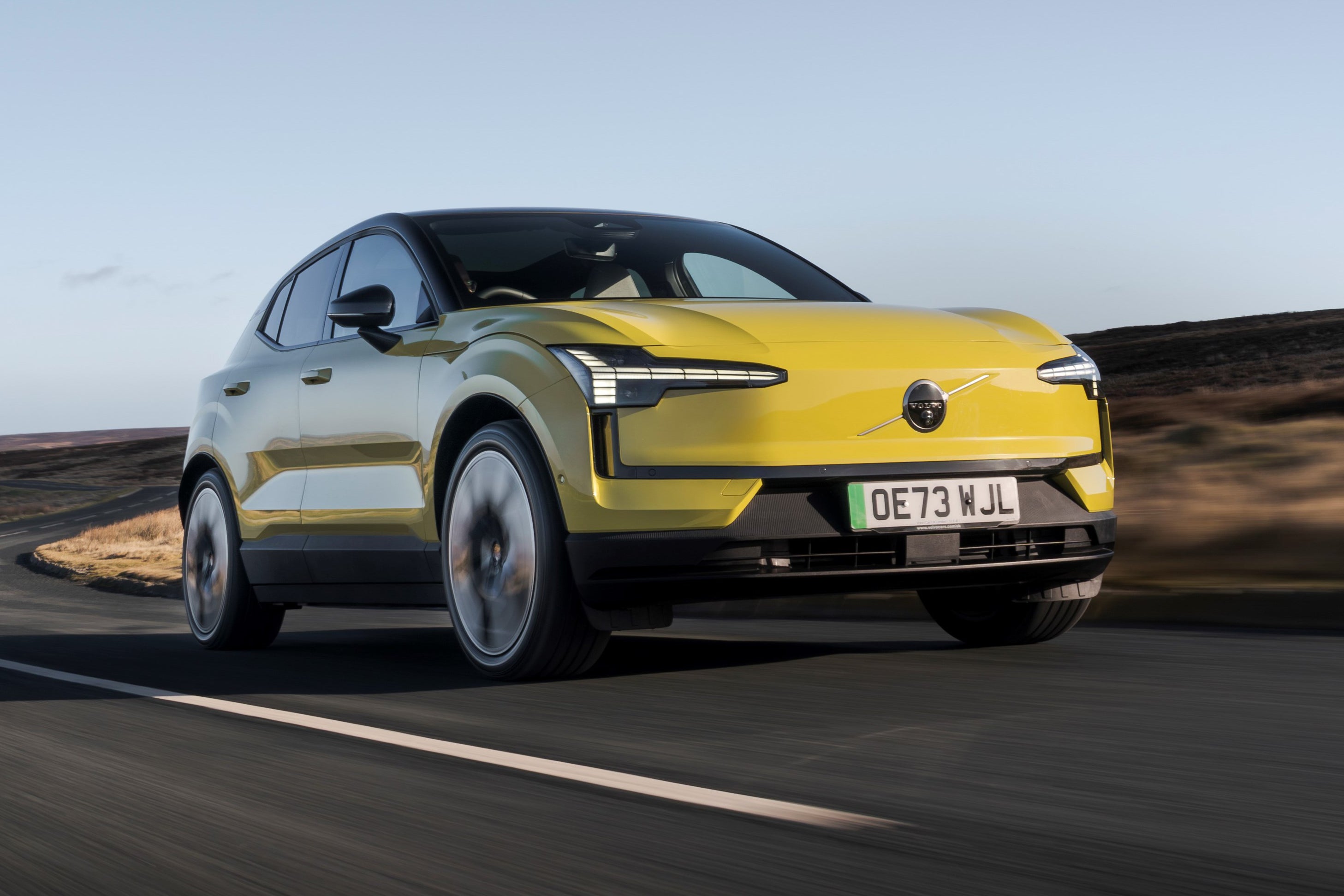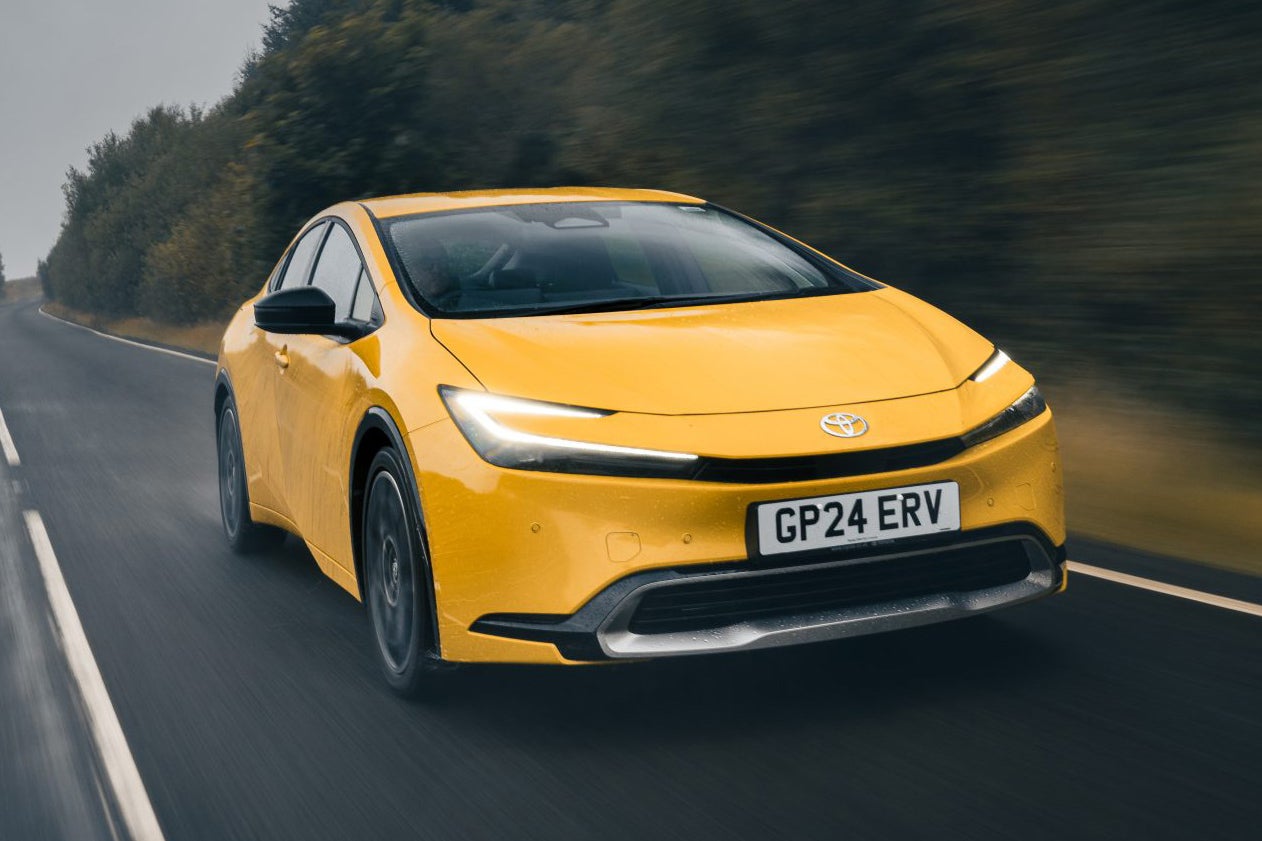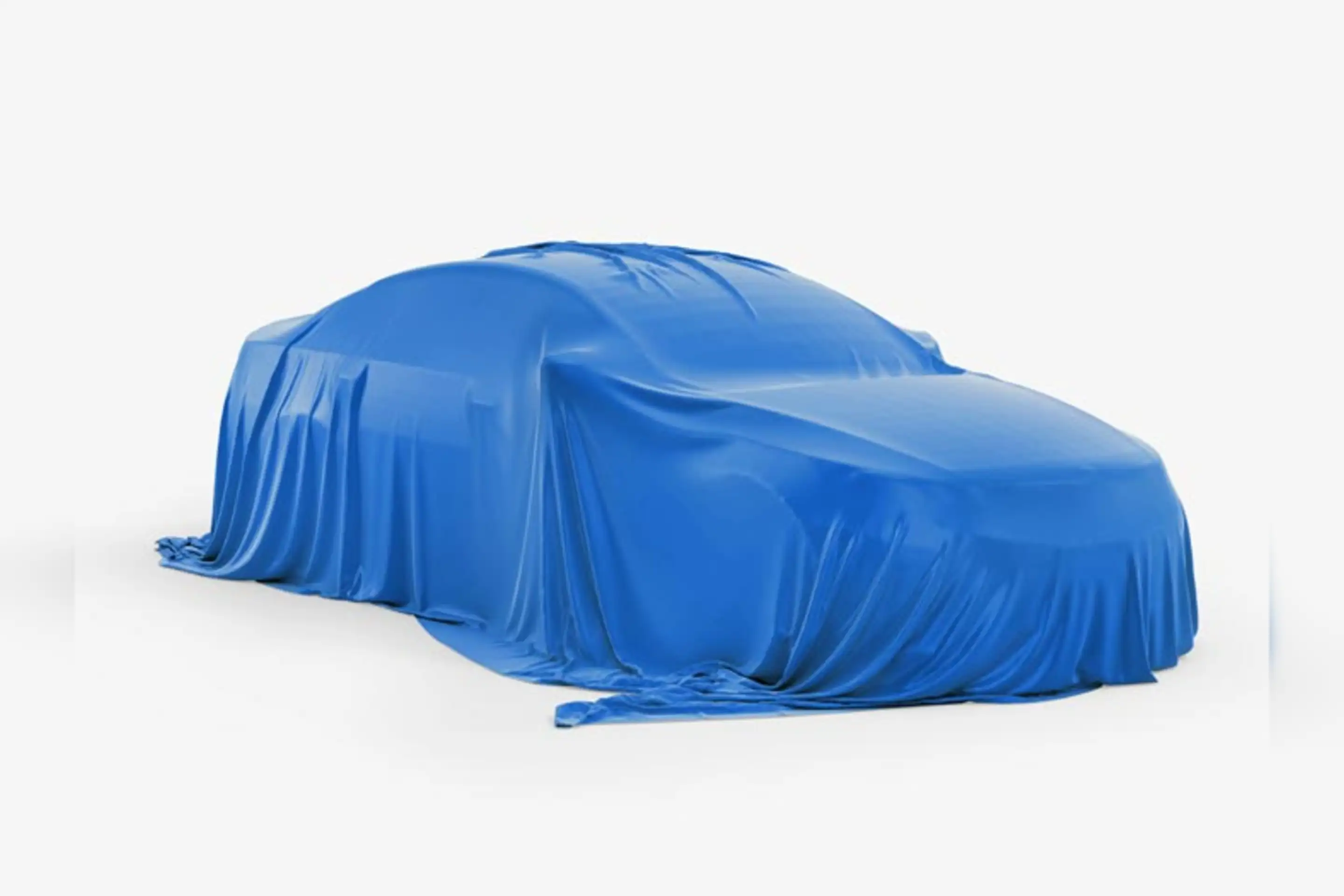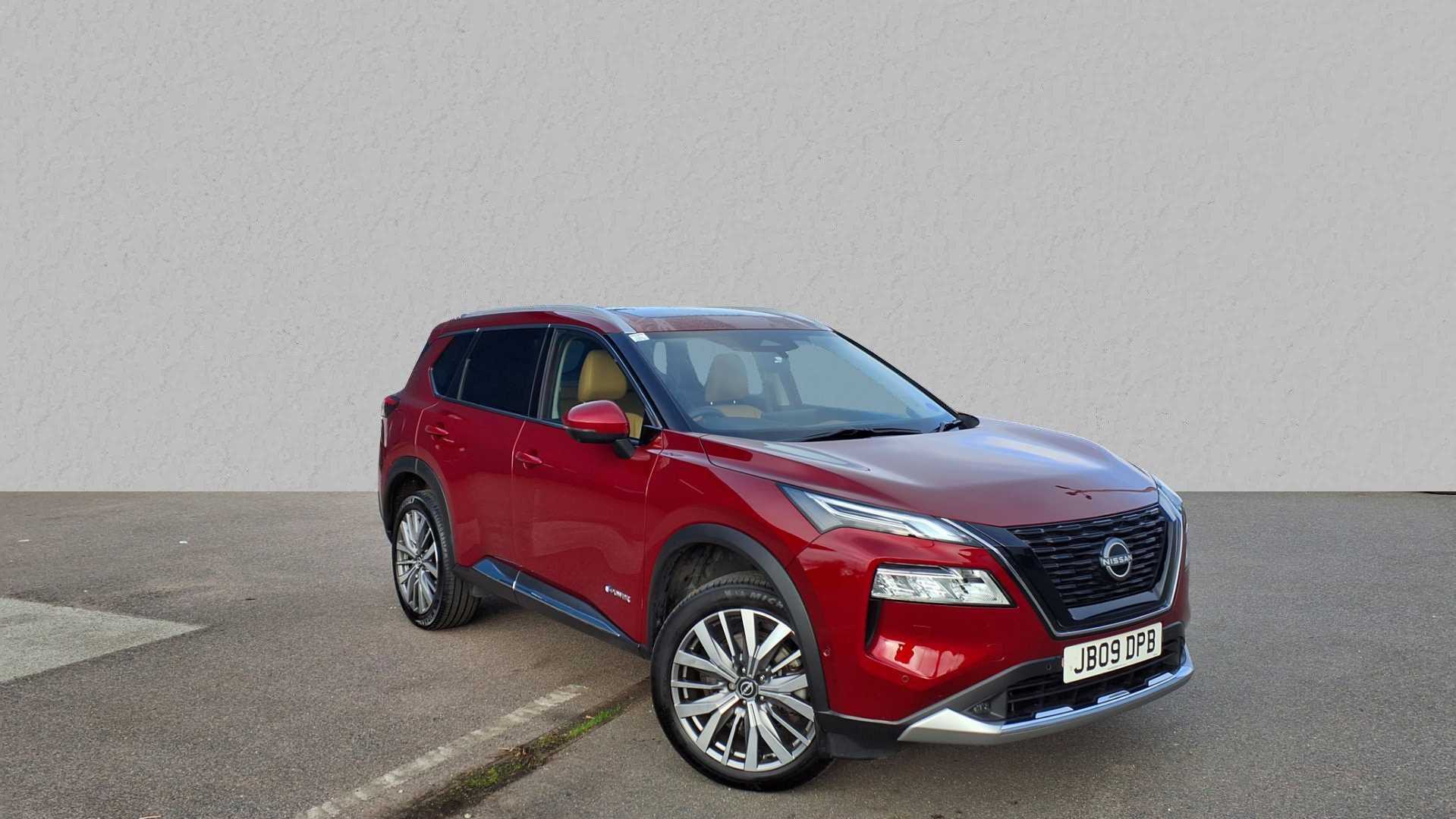
Clean air zones are designed to tackle pollution and make the air we breathe in our cities safer and healthier.
They are already in force in London in the form of the ULEZ (or ultra-low emission zone), which extended to operate across all London Boroughs in August 2023.
There are similar schemes in Bath, Birmingham, Bristol, Portsmouth, Sheffield and Tyneside with more cities - including Greater Manchester - planning to introduce them.
But what exactly is a clean air zone, why do they exist, what types do you get, and how do they affect you as a driver?
What are clean air zones?
A clean air zone (CAZ) is an area where the local authority is actively trying to improve the quality of the air. Clean air zones were originally conceived to affect only buses, taxis and lorries, but the thinking has now expanded to include private vehicles: in other words, the car you drive. It's part of the Government's broader plan to improve air quality, which will see petrol and diesel cars phased out by 2030 with hybrid models' demise following five years later.
What types of clean air zones are there?
You'll come across two types of clean air zone: charging and non-charging.
Non-charging clean air zones will work to improve air quality without imposing tariffs on vehicles entering the zone. This can be done in a variety of ways, such as improving traffic flow management and public transport networks, but also through Government initiatives that advise on the health impacts of poor quality air, encourage the use of cycles, and advise us to do things like switching our engines off when we're parked up.
It's the soft approach designed to change our attitudes towards air pollution, while gently steering us towards behaviour that lowers it.
Clean air zones that charge take a more direct approach by simply charging for any vehicle that's liable to enter the zone. This charge is usually based on your car's emissions: in London's ULEZ – which has a similar modus operandi to a CAZ – diesels that don't conform to Euro 6 and petrols that don't pass Euro 4 standards pay a fee.
ANPR (Automatic Number Plate Recognition) cameras log the registrations of any and all cars driving within the clean air zone (cars parked within the zone that remain stationary will not be charged). With some clean air zones, drivers have a certain period of time in which to pay the appropriate charge online. If payment isn't made within the timeframe, a penalty notice is automatically issued to the registered keeper of the vehicle, commanding a much larger sum. In some others - including those in Scotland - there's no fee for driving within a zone, and all non-compliant vehicles detected driving within the zone are immediately issued with a penalty charge.
Classes of clean air zones
Charging clean air zones fall under four Classes: Class A, B, C and D. Class A covers buses, coaches and taxis, Class B effects buses, coaches, taxis, private hire vehicles and heavy goods vehicles, while Class C goes a step further bringing buses, coaches, taxis, private hire vehicles, heavy goods vehicles, vans and minibuses under its remit.
Class D is the toughest of the lot, covering buses, coaches, taxis, private hire vehicles, heavy goods vehicles, vans, minibuses and cars, plus the local authority also has the option to include motorcycles.

Why are clean air zones coming into force?
The Royal College of Physicians estimates that 40,000 deaths can be attributed to exposure to outdoor pollution. It has been linked to cancer, asthma, strokes, heart disease, diabetes, obesity and dementia. The knock-on effects to business and the national health service are said to cost the country more than £20 billion every year.
Reports like this, and pressure from environmental groups such as the World Health Organisation, mean that Government ministers were ordered by the Supreme Court to introduce measures designed to tackle the amount of nitrogen dioxide (NO2) in the air: clean air zones are central to this compliance.
What are the clean air zones in the UK?
A number of cities in England such as Bath, Birmingham, Bradford, Bristol, Portsmouth and London have CAZs already operating, while others such as Sheffield and Tyneside are due to introduce them in 2023.
Aberdeen low emission zone
Aberdeen introduced a low emission zone (LEZ) in May 2022. It is in the city centre as this is where air quality is poorest. There was initially a two-year grace period for all vehicle types where charges wouldn't be enforced on non-compliant vehicles, in order to allow people time to comply with the LEZ. However, enforcement of the charges began in June 2024.
Pre-Euro 6 diesel cars (generally those registered before 2015) and pre-Euro 4 petrol cars (generally those registered before 2006) are fined £60 (reduced by 50% if paid within 14 days) if they enter the LEZ. The penalty is doubled with each subsequent breach of the regulations by a particular vehicle within 90 days, with the amount being capped at £480 for cars and Light Goods Vehicles, and £960 for buses, coaches and lorries. After 90 days, the rate is reset to the initial £60 charge.
Bath clean air zone
Bath was the first city outside London to introduce a charging clean air zone. Its CAZ came into force in March 2021 and covers the city centre, operating 24 hours a day, 365 days a year. Non-compliant vans, taxis and minibuses (pre-euro 6 diesel and pre-euro 4 petrol vehicles) are charged £9 per day to enter the zone. Trucks, lorries, buses and coaches, meanwhile, face a £100 daily charge. Private cars and motorbikes are currently exempt. Drivers have 28 days to pay the charge, and if it remains unpaid, a £120 fine is issued, on top of the original charge, which still needs to be paid. That fine is reduced to £60 if paid within 14 days.
Birmingham clean air zone
Birmingham's Class D clean air zone took effect on 1 June 2021 and operates within the inner ring road (A4540 Middleway). Non-compliant cars, taxis and vans pay an £8 daily charge. Buses, coaches and HGVs that don't comply pay £50. It operate 24 hours a day, 365 days a year, with the charges applied daily to non-compliant vehicles.
Non-compliant vehicles driving in the Zone will pay once for the day, then may drive in the area without limit on that day. If your vehicle meets the necessary emission standards, you won’t need to pay the daily charge. For diesel cars, the standard is Euro 6 or better — while petrol cars will need a Euro 4 standard or better. Fully electric or hydrogen fuel cell-powered vehicles won’t need to pay the charge.
Drivers have a 13-day window to pay their charge: they can pay of the day of travel, six days before the day of travel, and six days after. Failure to pay results in the issue of a £120 fine which must be paid within 28 days, and is reduced to £60 if paid within 14 days.
Bradford clean air zone
Bradford clean air zone was launched on 26 September 2022. Non-compliant vans are charged £9, non-compliant taxis £7 and non-compliant lorries, buses and coaches £50. There is no charge for private cars.
The Bradford zone covers the area inside, and including, the Bradford outer ring road. It also extends out along the Aire valley corridor, (Manningham Lane/Bradford Road and Canal Road area) to include Shipley and Saltaire.
You can pay your charge up to six days before your visit or up to six days after, but failure to pay results in the issue of a £120 fine which must be paid within 28 days, and is reduced to £60 if paid within 14 days.
Bristol clean air zone
Bristol's CAZ took effect on 28 November 2022. Private cars, taxis and vans will be charged £9 per day and buses, coaches and HGVs will be charged £100 per day. Charges will not apply to: Euro 4, 5 and 6 petrol vehicles, roughly 2006 upwards; Euro 6 diesel vehicles, roughly end of 2015 onwards; fully electric vehicles and hydrogen fuel cell vehicles; modified or retrofitted vehicles registered with the Energy Saving Trust’s Clean Vehicle Retrofit Accreditation Scheme (CVRAS); and motorbikes.
Charges must be paid withing six days either side of the day of travel and a fine will be issued if charges remain unpaid. Fines must be paid within 28 days, and will be halved if paid within the first 14 days.
Dundee low emission zone
Dundee introduced a low emission zone (LEZ) in mid-2022 with the inner ring road forming the boundary of the LEZ. A two-year grace period was initially granted where charges would not be enforce, but that has now expired and enforcement began on May 30th 2024.
The Dundee LEZ operates 24 hours a day, 365 days a year, and applies to all vehicle types, apart from motorcycles and mopeds. The minimum emission standards vehicles have to meet to enter the zone are Euro 4 for petrol cars and vans and Euro 6 for diesel cars and vans. Cars that don’t meet these standards and enter the Zone will be fined £60 (which can be reduced by 50% if paid within 14 days). The fines for subsequent offences in the same vehicle within 90 days are doubled, being capped at £480 for cars and vans, and £960 for buses and lorries.
Edinburgh low emission zone
Enforcement of Edinburgh's LEZ began on 1 June 2024, and runs 24 hours a day, 365 days a year. The minimum standard for petrol cars and vans is Euro 4 and for diesel cars, the standard is Euro 6 or better. Non compliant cars caught driving within the zone will automatically be issued with a £60 fine, payable within 28 days. If not paid within that timeframe, the fine increases by 50%, but if paid within the first 14 days, it deceases by 50%. Fines will double for subsequent offences made in the same vehicle with 90 days, with caps of £480 for cars and vans, and £960 for buses and lorries.
The boundary for the Edinburgh LEZ encapsulates the city centre and includes: Tollcross in the south to Palmerstone Place in the west, along Queen Street in the New Town to Picardy Place, around Abbeyhill and onto Holyrood Road, along the Pleasance in the east before heading back along the Meadows to Tollcross.
Glasgow low emission zone
Glasgow was Scotland's first city to introduce a low emission zone. The LEZ, which operates 24 hours a day, all year round, was introduced at the end of 2018 and initially only applied to local bus services. From June 2023, however, all non-compliant vehicles are fined if they enter the LEZ in the city centre. People who live in the zone were be granted an additional grace period of one year (until 1 June 2024) to comply, but this period has since expired. The standard fine is £60 like it is in all of Scotland's LEZ locations, and the payment terms are the same, too.
Euro 4 petrol vehicles, Euro 6 diesel vehicles and electric vehicles are compliant with the Glasgow LEZ. Motorcycles, mopeds, motorised tricycles and quadricycles are unaffected by LEZ schemes in Scotland.
Glasgow's LEZ runs in an area bounded by (but not including) the M8 motorway to the north and west, the River Clyde to the south, and Saltmarket/High Street to the east.
Greater Manchester clean air zone
Greater Manchester's clean air zone (CAZ) is currently under review. The scheme was due to be introduced on 30 May 2022, and would have applied to private hire vehicles, vans, buses and HGVs. However, concerns about financial hardship for local people and the availability of compliant vehicles led the Mayor of Greater Manchester and Greater Manchester local authority leaders to ask the Government to lift its legal direction for the CAZ as soon as possible.
A new Government direction now requires Greater Manchester’s 10 local authorities to bring nitrogen dioxide on local roads to within legal limits as soon as possible and by no later than 2026. Since then, an investment-led Clean Air Plan has been introduced - including the utilisation of zero-emission buses through the Bee Network - and projections show that this is bringing down local pollution at a rate necessary to meet Government requirements, and without the need for a charging Clean Air Zone. The latest Clean Air Proposals are regularly amended to take into account changing circumstances, and are still subject to Government approval.
Liverpool clean air zone
Liverpool considered a Clean Air Zone, as part of its Clean Air Plan, but it was rejected by Liverpool City Council in July 2023 over fears of it being too expensive for drivers and not being effective enough in reducing local pollution. The council is now working on other methods of improving air quality to meet Government requirements.
London ULEZ
The London ultra-low emissions zone (ULEZ) charges £12.50 per day for non-compliant cars, motorcycles and vans, and £100 per day for heavier vehicles including lorries. These charges are payable in addition to the weekday congestion charge and low emission zone (LEZ) charge.
The ULEZ was extended to an area 18-times larger than the original zone in October 2021, encompassing London boroughs up to both the North and South Circular roads. It was then expanded further across all London boroughs from August 2023.

Oxford
Oxford launched a pilot zero emission zone (ZEZ), which covers a number of streets in the city centre, on 28 February 2022, ahead of plans to introduce a larger ZEZ covering most of the city centre. This extension of the ZEZ is subject to a public consultation due to take place sometime in 2025, with a Cabinet decision due on the proposal sometime in 2026.
Currently, drivers of petrol and diesel vehicles, including hybrids, have to pay a daily charge of up to £10 to enter the pilot zone, which operates from 7am to 7pm each day.
The pilot covers New Road, between Bonn Square and its junction with Castle Street; Bonn Square; Queen Street; Cornmarket Street; New Inn Hall Street; Shoe Lane; Market Street, from Cornmarket junction east for 40 metres; Ship Street; and St Michael’s Street.
Zero emission vehicles, such as electric cars, can enter the pilot area free of charge, with cars that emit less than 75g/km of carbon dioxide (CO2) being charged £2, Euro 4 petrol and Euro 6 diesel cars attracting a £4 charge, and all other cars having to pay £10. Failure to pay the charge results in a £30 fine if paid within 14 days, or £60 if paid within 28 days. After that, you have another 14 days to pay an increased fine of £90 to avoid court action.
Newcastle and Gateshead
A charging CAZ covers most of Newcastle city centre, as well as routes over the Tyne, Swing, High Level and Redheugh bridges. It applies to taxis, vans, buses, coaches and HGVs that don’t meet national emissions requirements. Private cars are not affected by the CAZ.
For taxis and vans, this means Euro 6 diesel, registered after September 2015, and Euro 4 petrol vehicles, registered after 2005. For buses, coaches and HGVs, this means Euro VI vehicles registered after 2014.
Charges for non-compliant vehicles to drive within the CAZ will be £12.50 a day for vans and taxis and £50 per day for buses, coaches and HGVs.
Portsmouth
Portsmouth’s clean air zone was introduced in November 2021 and is located to the southwest of the city. For the Portsmouth charging CAZ, non-compliant vehicles are Heavy Goods Vehicles (HGVs), buses and coaches, taxis and private hire vehicles (PHVs) that don't meet Euro 6 emissions standards (so are Euro 5 or older) if they are diesel, or do not meet Euro 4 emissions standards (so are Euro 3 or older) if they are petrol.
Older, more-polluting HGVs, buses and coaches pay £50 per day to travel through the zone and non-compliant taxis and private hire vehicles pay £10 per day. Private cars, motorcycles and vans are not charged under this Class B CAZ.
Sheffield
Sheffield introduced a charging CAZ in February 2023 , which covers the inner ring road and the city centre, including Park Square and the A61/Parkway junction.
The CAZ in Sheffield does not charge private cars for entering the city centre. Buses, HGVs and taxis are responsible for half of the air pollution but only make up 20% of the traffic and, by focusing on them, the city can reduce air pollution as quickly as possible.
Vehicles that meet these standards are not charged: Taxis which are ultra-low emissions (hybrid, electric and hydrogen fuel cell) or Liquid Petroleum Gas (LPG), LGVs and minibuses with Euro 6 diesel or Euro 4 petrol, buses and coaches with Euro 6 diesel, HGVs with Euro 6 diesel.
Vehicles that do not meet these standards are charged: £10 per day for polluting LGVs and taxis, and £50 per day for coaches, buses and HGVs.
Older diesel cars are taxed more heavily and some will be liable to pay emissions zone charges like London's ULEZ. Newer diesels are much cleaner and don't carry the financial penalties, however, they need regular motorway runs to keep their DPF filters clear.
The UK government has pledged to ban the sale of brand new petrol and diesel cars by 2030, with hybrid cars going off sale in 2035. While this covers the sale of new cars, these changes won't effect cars that are already on the road.
If you're buying a second hand car that you'll drive in the London ultra low emission zone, which expanded London-wide in 2023, you'll want to choose a car that conforms to its regulations. In other words, you want a Euro 6 diesel (one sold from 2015 onwards) or a Euro 4 petrol, which were sold from 2005. Before you buy your car, you're best to check if it's exempt on the Transport for London website.
Cars that are exempt from Clean Air Zone charges
Loading...
More car buying and owning guides
Everything you need to know about buying and owning a car from our experts




